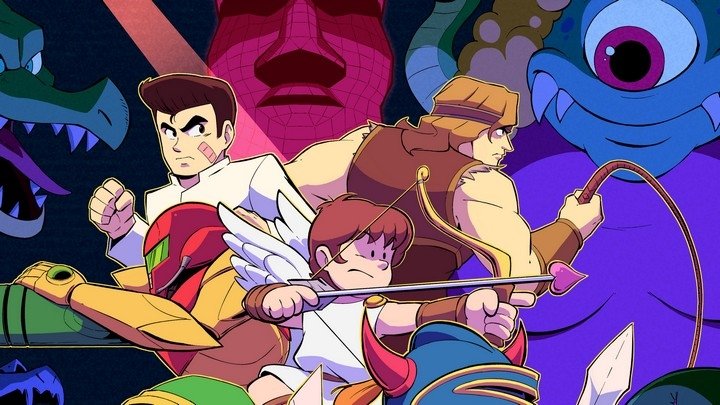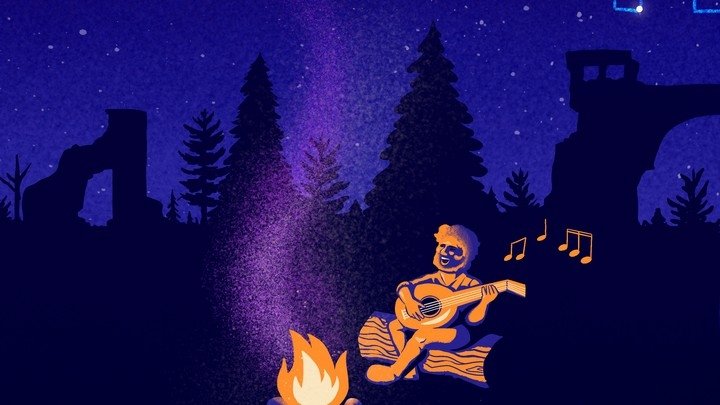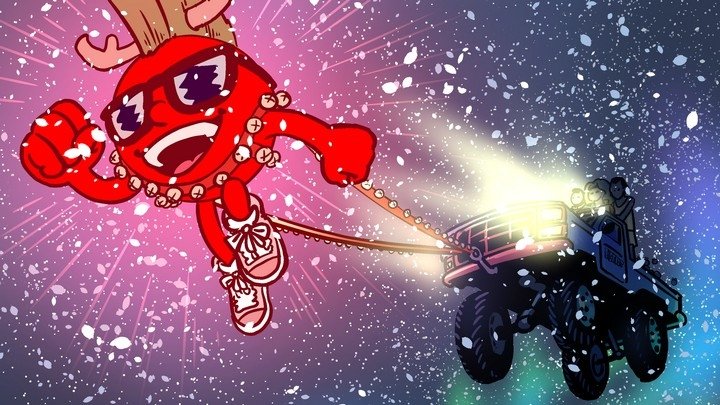Super NES Mini Countdown: #03 | Zelda: A Link to the Past
Link's defining adventure was a high point for the Super NES, too.
Nintendo's Super NES Classic Edition mini-console arrives at the end of the month, and the Retronauts writing team has voted to rank the 20 classic games on the mini. Unlike last year's Classic NES Edition, the Super NES mini doesn't have a single dud on it, so think of this as a countdown from good to great. This time, the quintessential action RPG.
- 20. Super Punch-Out!!
- 19. F-Zero
- 18. Kirby's Dream Course
- 17. Donkey Kong Country
- 16. Star Fox
- 15. Super Mario RPG
- 14. Secret of Mana
- 13. Super Mario Kart
- 12. Street Fighter II Turbo: Hyper Fighting
- 11. Super Ghouls 'n' Ghosts
- 10. Kirby Super Star
- 9. EarthBound
- 8. Final Fantasy III
- 7. Contra III: The Alien Wars
- 6. Super Castlevania IV
- 5. Super Mario World
- 4. Mega Man X

3. The Legend of Zelda: A Link to the Past
Developer: Nintendo
Publisher: Nintendo
Genre: Action RPG
Release date: Nov. 1991 [JP] ] April 1992 [U.S.] Sept. 1992 [EU]
What makes A Link to the Past a worthy inclusion?

The definitive Zelda
Ocarina of Time has been called the greatest Zelda game, and sometimes even (rather breathlessly) the greatest game ever made. And, OK. Maybe so. But Ocarina would never have existed without A Link to the Past; the N64 game copies its design template wholesale from the Super NES classic. The dungeon-puzzle-tool-boss relationships, the quest chains, the town-as-hub concept, the dual-world format: It all started here. A Link to the Past turned out to be such a great format for Zelda, in fact, that it took 25 years for the series to escape from its gravity; Breath of the Wild is the first main entry in the Zelda franchise to eschew its 16-bit predecessor's structure.
Between two worlds
The dual-world design of A Link to the Past has proven to be one of the most popular concepts in adventure games and action RPGs. (Technically, I suppose Dr. Jekyll and Mr. Hyde for NES did it first, but uh, that game was kind of terrible.) Other Zeldas have done it. Castlevania has borrowed it. Legacy of Kain: Soul Reaver used it. Metroid did it. And so on! You can understand why: Overlaying an alternate version of the main game world atop the real one allows designers to reuse existing game assets, tweaking them to look ever-so-slightly uncanny. All for a whole lot less time and money than building an entirely new second space. It's the best kind of hack: A way to expand game content, force players to intuit their way through a familiar space where everything they know is wrong, for relatively little extra cost.
The full-game prologue
A Link to the Past wastes no time dropping players into the thick of things, with a dark and stormy opening that leads immediately to the rescue of Princess Zelda. Over the next few hours, Link roams the full expanse of Hyrule and completes a series of dungeons that in a lesser game would comprise the entirety of the adventure. And then! You realize you're only about a quarter of the way through the quest as the whole separate universe opens up, with eight all new dungeons to master. The "main" quest, it turns out, was merely training wheels.

A fine collection of heart
One of A Link to the Past's most ingenious design choices was to turn the act of upgrading Link's stamina into a sort of puzzle quest in and of itself. Here the Heart Containers of previous Zelda games, which added a notch to Link's health meter, appear in fragments (outside of the whole Containers that bosses yield as a reward). In order to claim a Container upgrade, players have to find four Pieces of Heart. These appear all over the world: Hidden, as rewards for quests and minigames, and sometimes even sitting in plain sight in inaccessible places that entice players to return later once they can more completely navigate the world. Yeah, the Metroidvania concept really is more like "Zeldavania." Or "Zeldatroid." Whatever.

Bunny Link
Finally, who couldn't love a game that reveals the brave hero of Hyrule's deepest, most innermost self is… a pink, fluffy bunny?
Interesting facts about A Link to the Past
A link to the future
Nintendo's recent deep-dives into Zelda's arcane history has brought some interesting facts to light, but perhaps none are quite so fascinating as the fact that Nintendo originally planned for the dual worlds of A Link to the Past to span time rather than dimensions: The Dark World would have been a futuristic place, not a shadowy reflection of the Light World. Part of those early designs involved Princess Zelda wearing skimpy, Buck Rogers-esque sci-fi armor. Weird. The time-travel element resurfaced in Ocarina of Time, of course, and hints of lost futuristic civilizations have become a bedrock of the franchise ever since Twilight Princess embraced them in a big way.

Rendering error
The iconic opening screen of A Link to the Past, in which a trio of 3D Triforces converges in the center of the screen while tumbling through the air, made for a pretty cool visual effect on Super NES in the days before Star Fox made polygons seem like no big deal. Interestingly, the Triforces tend to give emulators fits, often animating at the wrong speed, so many people who have never played an official release of the game will probably be a little startled by the fact that they move correctly on Super NES mini.
A link between generations
The best thing about experiencing A Link to the Past for the first time here in 2017 is that you can immediately follow it up with an excellent sequel. A Link Between Worlds for 3DS revisits the world — well, worlds — of A Link to the Past with some interesting plot twists. It's also one of the most highly rated Zelda games of all time (though its relatively close proximity to Breath of the Wild has sucked away some of its oxygen).

Top secret room
A fellow named Chris Houlihan won a Nintendo Power contest to have his name inserted into a future Zelda game, and Nintendo of America made good on their agreement… sort of. In the U.S. localization, a secret room that can only be reached by making use of glitches was turned into "Chris's room" — something never mentioned in the Japanese text. Future releases of A Link to the Past removed Houlihan's name. Some legacies were never meant to be.

Sho' nuff
For more than a year following the launch of A Link to the Past, Nintendo Power ran a serialized comic based on the game, drawn by the legendary manga creator Shotaro Ishinomori, whose works include the series Cyborg 009. That's kind of a big deal. It would be like Jack Kirby drawing a comic adaptation of God of War, or something. It's a pretty fun comic series, too, in a fast-paced adventure manga (that takes great liberties with the source material's canon) sort of way. And, happily, Dark Horse Comics compiled the entire series about a year ago, so you should be able to track down a copy easily at your favorite book store.
Some images courtesy VG Museum




